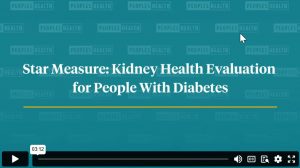CMS has phased in its V28 hierarchical condition category (HCC) model and 100% of the model is in effect for 2025 dates of service for 2026 payment. The prior model, V24, has fully phased out.
CMS evaluates the historical costs of health care services based on patterns of utilization for Medicare populations and develops HCC models to predict future costs. V28 is based on 2018 and 2019 data, reflecting changes in health care utilization, coding and expenditures. Model changes are expected to reduce overall risk adjustment factor scores by 3.12%, impacting care management strategies and allocation of resources.
The V28 model includes important technical updates, including restructuring diagnosis and HCC mapping. Significant changes include:
- An increase in the number of HCCs from 86 to 115
- Deletion and addition of codes
- Renumbering and changing of HCCs
- Changes to the HCC coefficient values
Review the article “What to Know About the CMS V28 Risk Model and Capturing Chronic Conditions.”
To prepare for V28, we encourage you and your office to:
- Focus on understanding the HCC model changes
- Educate staff on the new coding guidelines and the implications of V28
- Continue identifying high-impact conditions affecting your patients
- Enhance documentation practices, as needed, to accurately capture condition complexity and streamline coding processes
- Capture all conditions, whether risk-adjusted or not, as well as those prevalent in Louisiana populations, including but not limited to chronic kidney disease, chronic obstructive pulmonary disease, chronic heart failure, morbid obesity and diabetes
- A clear and comprehensive documentation practice lends itself to more precise patient care planning and improved health outcomes
Coding guidelines – key takeaways
Remember SOAP. Each diagnosis requires the four elements of a SOAP note:
- Subjective
- Objective
- Assessment
- Plan—even if the plan is observation or no treatment
Code to the highest level of specificity, complexity (noting comorbidities) and accuracy possible for all applicable diagnoses.
Chart notes should reflect the level of decision-making (assessment and plan of care). Use diagnostics, lab results and consults to confirm diagnoses.
- Document in the progress note the interpretation of test results to confirm diagnoses.
- Reference the source of diagnoses in the progress note.
Resources are available
Review and complete our Educational Initiatives Module: Staying Ahead of Patients’ Clinical Needs. The module includes downloadable resources, including these handouts:
- Identifying and Documenting Heart Failure, Chronic Obstructive Pulmonary Disease and Chronic Kidney Disease
- Kidney Health Evaluation Guidelines


















